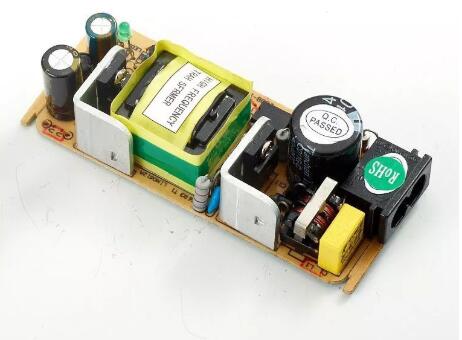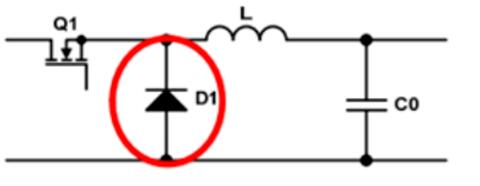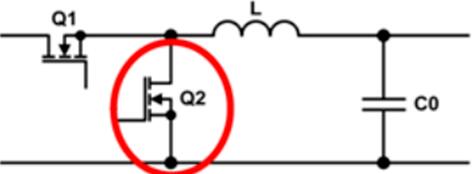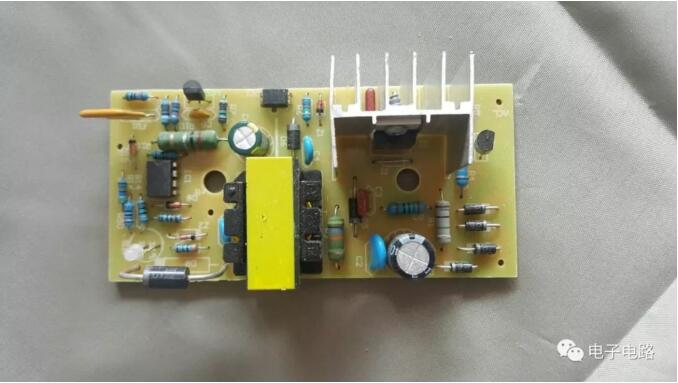The switch power supply charges the inductor when the power tube is turned on, and the inductor stores energy; When the power is turned off, the inductor releases energy, thus realizing voltage conversion.

When the power tube is disconnected, the current circuit is needed for the inductor to release energy. Different kinds of freewheeling components will involve different rectification methods, namely synchronous rectification and asynchronous rectification.So what is the difference between synchronous rectification and asynchronous rectification?
First, distinguish between synchronous and asynchronous
01 asynchronousTake BUCK circuit as an example, if there is only one mos tube (power tube) in the circuit, and the rectifier diode is used in the freewheeling circuit (the diode has unilateral conductivity, and no additional circuit is needed to control its on/off), then the circuit is asynchronous, because it has only one MOS tube (or switching tube) to be controlled by the circuit, and the freewheeling diode does not need a control circuit, so it is unnecessary to emphasize the synchronous control diode (D1), which can be understood as nonsynchronous.


02 synchronizationIf the MOS tube (Q2) is also used in the freewheeling circuit, that is, both the upper and lower tubes are MOS tubes. Because the MOS tube itself is a component that needs external control, Q1 and Q2 must be synchronously controlled according to the switching sequence of the power supply in the rectification process, so the circuit is synchronous. The synchronous circuit is shown in Figure 2:Figure ii


The MOS transistor is a voltage-controlled device, and its volt-ampere characteristics are linear when it is turned on. When a power MOS transistor is used as a rectifier, it is required that the gate voltage must be synchronized with the phase of the rectified voltage to complete the rectification function, so it is called synchronous rectification. Second, the advantages and disadvantages of synchronous and asynchronous
01 Advantages and disadvantages of asynchrony
◆ High stability Because Schottky diode is passively turned on, there will be no simultaneous conduction of upper and lower tubes in synchronous finishing circuit, so its stability is higher than that of synchronous finishing circuit.
◆ Low efficiency When the current flowing through Schottky diode is large, the voltage generated by freewheeling current on the diode is relatively large (about 0.5V). When the output voltage is very low, the voltage drop of the diode accounts for a large proportion, and it consumes relatively large power, so the efficiency is low when the output voltage is high and low.
02 Advantages and disadvantages of synchronization
◆ High efficiency The internal resistance of general MOS tube is very small. Under the condition of the same current flowing, its conduction voltage drop is far less than the forward conduction voltage drop of ordinary Schottky diode, so the loss power of MOS tube is far less than that of diode, so the efficiency of synchronous rectification will be higher.

◆ The Mos transistor with insufficient stability needs a driving circuit, and the synchronous rectification needs an additional control circuit for the MOS transistor, so that the upper and lower MOS transistors can be synchronized. Compared with non-synchronization, the synchronous control circuit is relatively complex, and the more complex the circuit is, the less reliable the stability is. If the logic is confused and the upper and lower transistors are turned on at the same time, the system will fail. Third, the choice of synchronous and asynchronous The choice of synchronous or asynchronous is mainly considered from three aspects: efficiency, cost and reliability.
For higher output voltage and higher duty cycle, the power consumption of Schottky diode and synchronous rectifier lower power tube in asynchronous system is relatively low, and there is no obvious difference in conversion efficiency between synchronous rectifier and asynchronous rectifier at this time.

For applications with low output voltage, low duty cycle and high current, the conversion efficiency of synchronous rectification is relatively high.
To sum up, if high efficiency is required and the requirements for cost and reliability are not too high, the synchronous rectification scheme can be selected; If the requirement for efficiency is not very high, asynchronous is preferred, and its reliability is better.
Disclaimer: This article is reproduced from "Power System Design". This article only represents the author's personal views, and does not represent the views of SAKOWEI and the industry. It is only for reprinting and sharing to support the protection of intellectual property rights. Please indicate the original source and author when reprinting. If there is any infringement, please contact us to delete it.。
Company Tel: +86-0755-83044319
Fax/fax:+86-0755-83975897
Email: 1615456225@qq.com
QQ: 3518641314 Manager Li
QQ: 332496225 Manager Qiu
Address: Room 809, Block C, Zhantao Technology Building, No.1079 Minzhi Avenue, Longhua New District, Shenzhen















